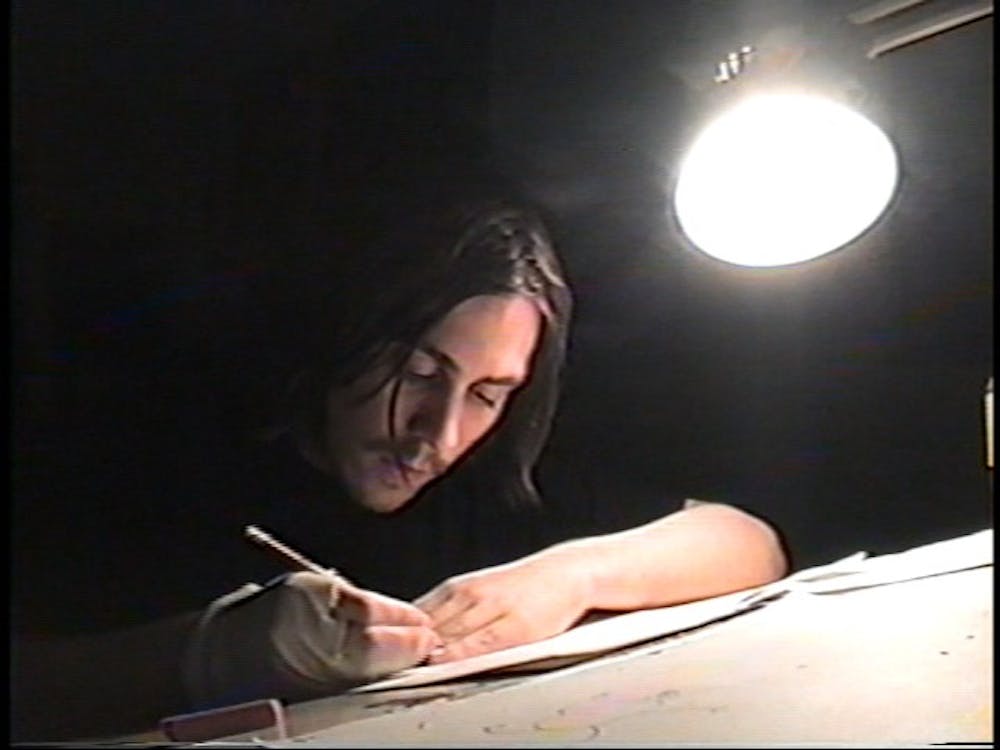
Sitting here listening to ‘90s rap, I wonder how I am supposed to describe Don Hertzfeldt’s acclaimed 2012 animated film It’s Such a Beautiful Day. I watched this movie mostly because it was relatively short and I had heard some good things about it.
I was more motivated by not having much more than an hour to spare before beginning the usual Saturday night revelries than I was by genuine interest in this movie.
Suffice to say, I did not expect to end that hour sobbing for five straight minutes. Nevertheless, that was what happened, and I am glad it did because this movie was one of the most amazing works of art I have ever had the pleasure of seeing. So stick with me as things get poetic.
In the simplest of terms, It’s Such a Beautiful Day is a movie about a fairly normal guy, albeit one crudely drawn in pencil. Our stick figure protagonist is Bill, who lives in a city, works at a job and does some things.
What makes Bill unique is the fact that he is sick, what exactly it is from is never revealed.

Whatever it is that is afflicting Bill is also distorting reality and stealing his memory from him. As a result, Bill often hallucinates, envisioning terrifying chimeras of humans and animals and dreaming horrible things that walk a thin line between reveries and nightmares.
Everywhere Bill goes, he exists beyond what is real. He remains aloof, observing the world around him and going through the motions day after day. As the movie progresses so does Bill’s illness, but ironically, the effect his sickness has on his memory leaves Bill essentially unaware that he is dying.
Thematically, this movie seems to be about illness, mortality, insanity and the pain that permeates every aspect of our mundane lives. That being said, it is also something of a redemption story. Bill’s struggles with a somewhat Buddhist corporeal suffering are eventually shed, which allows him to find some degree of enlightenment, albeit in this world.
The plot of this movie is not exactly one intended to make you feel that warm glow you get when you watch a sappy rom-com.
This is good though. Not all movies should be easy to watch. Some should make you hurt, make you feel uncomfortable and upset. It’s Such a Beautiful Day does just that.
Granted, it does have some elements of comedy, but it is the type of humor that can really only be enjoyed by a nihilistic cynic. Fortunately, I am one of those. Regardless of whether or not you fit that archetype, you probably stand to get something out of watching this movie, so watch it.
Artistically, It’s Such a Beautiful Day masters simplicity. The characters in the film are no more than stick figures projected onto plain backgrounds. Each scene is framed so that the viewer only sees Bill and what or whomever he is interacting with at that moment.
Usually, the space surrounding the small circles in which the characters live is black. However, when Bill suffers episodes of mental breakdown, that space comes alive. Hertzfeldt splices in disturbing images like broken glass, the inside of a human mouth and lapping flames against Bill’s animated hallucinations.
The images surrounding Bill’s tiny circle are frantic, constantly changing and leave viewers feeling as if they too are having a mental breakdown. That frenetic energy coincides with a cacophony, drowning out the narration and consuming every other sound in the scene.
Again, as you sit there and watch this stick man lose his mind with horrifying noises filling your ears as if the film was being shown inside your head, you start to feel like you are going crazy. This is far from a bad thing. Arguably, such a strong emotional reaction is a testament to Hertzfeldt’s prowess as the animator and director of the film, of which he was the narrator and basically everything else.
As the movie reaches its conclusion, everything around Bill transforms from simple stick drawings to footage of real people, places and things. Bill begins to see as we think we see everyday, and the frame is no longer confined by a narrow circle showing only him and the object of his attention.
Hertzfeldt’s sudden introduction of real color and sound and sights is a beautiful contrast to the rest of the film and its sullen drawings. This shift in pulls the viewer from their sadness and sympathy for Bill and turns it into joy as he sheds his proverbial blindness. The emotional effect of this shift is quite stunning.
It’s Such a Beautiful Day is not a movie to watch if you want to be entertained for an hour. This is not to say that it is not an entertaining movie, but it is one that requires some effort to watch. It is something of an intellectual exercise, akin to reading philosophy but a lot more coherent. It can be difficult and emotionally taxing, but this is all the more reason to watch it.
This film, like any great artwork, presents an opportunity to perhaps feel a way that you have not yet experienced, to give serious thought to ideas you never even considered. It is an object of criticism, something to think about and to analyze.
You might read all this and think I am full of it, and maybe I am. However, I know that this movie had a fairly profound effect on me, and based on the criticism I have read, I do not think I am alone in that feeling.





